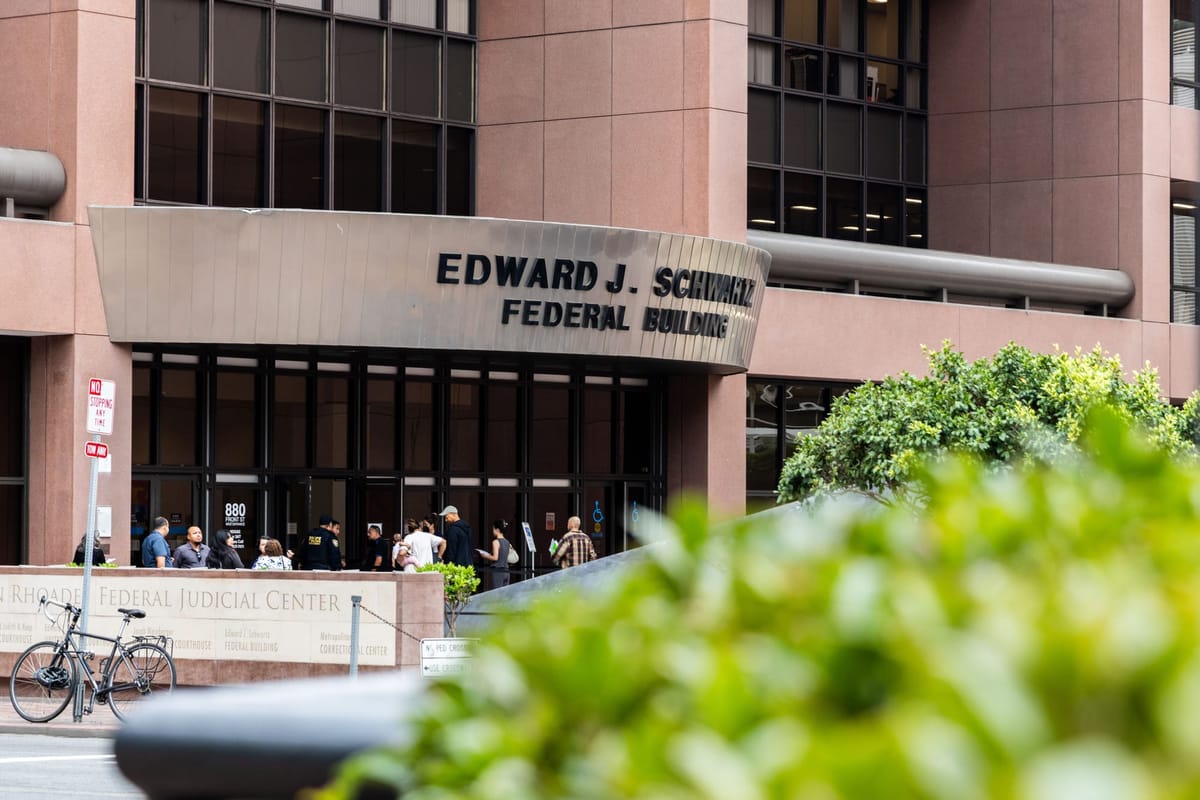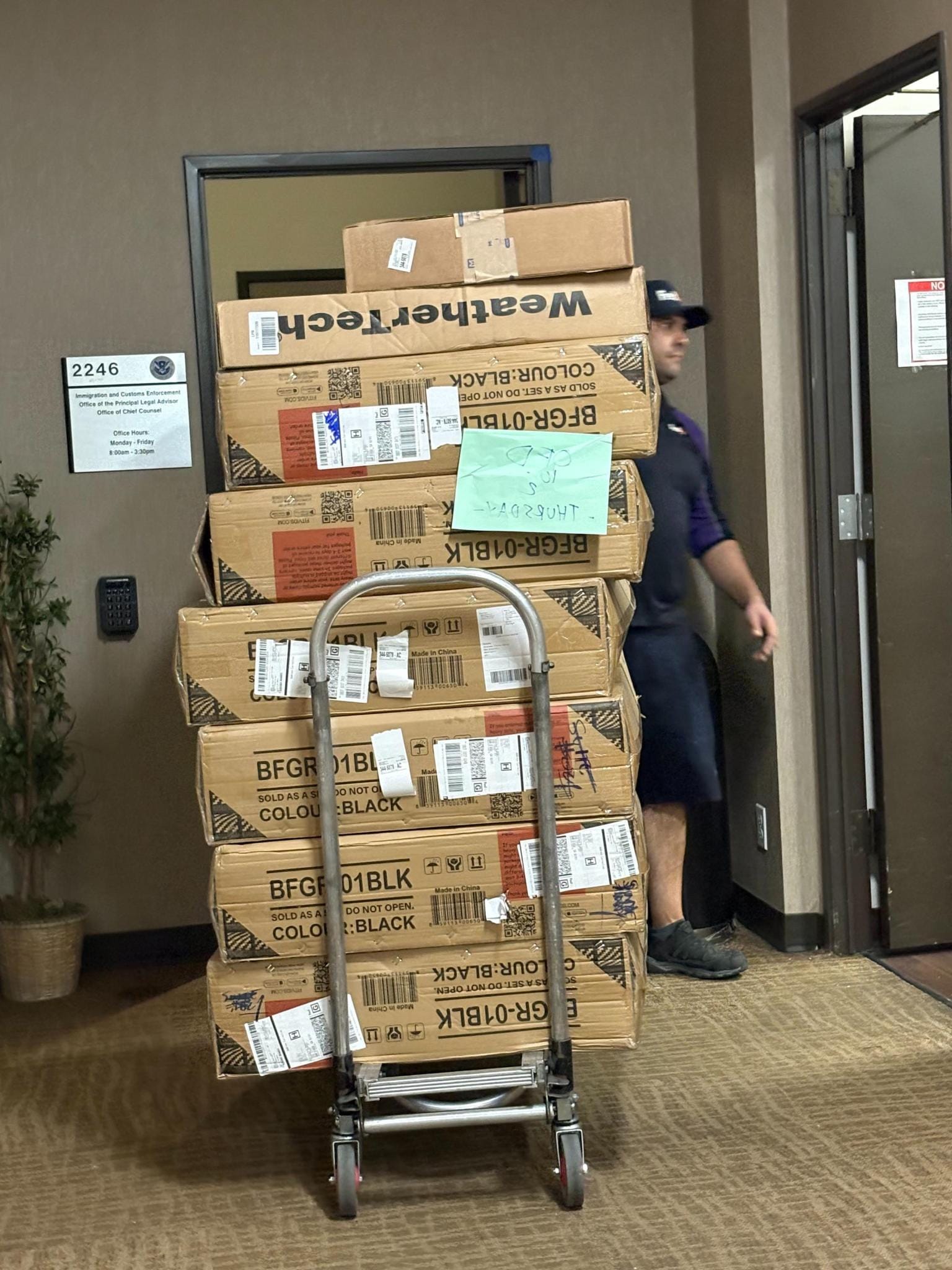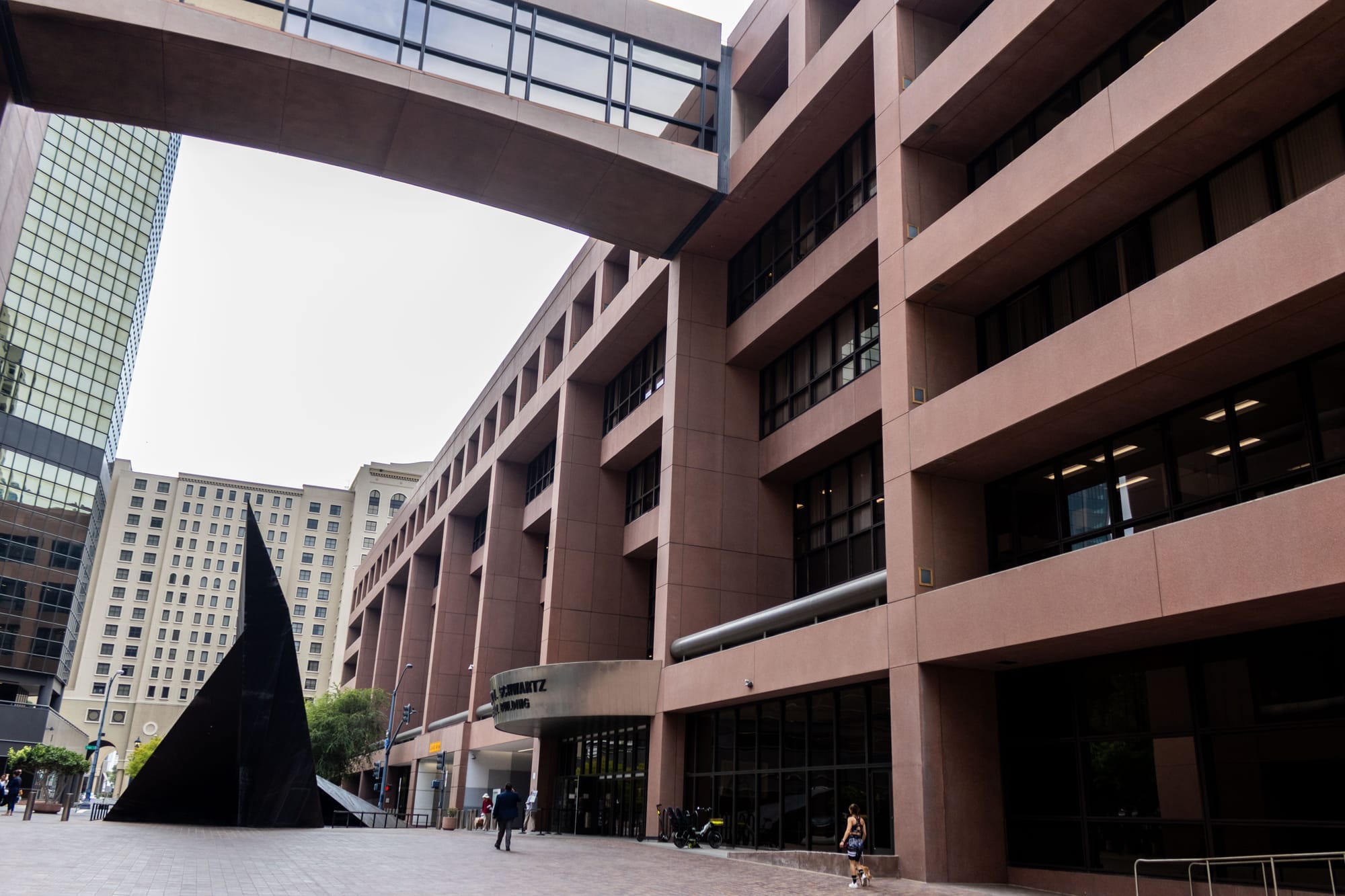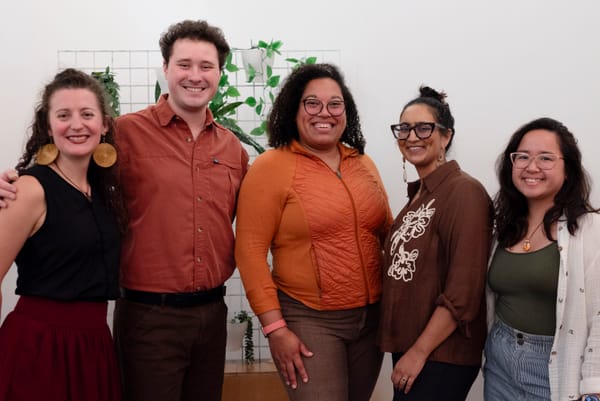ICE in San Diego has a new policy — detain everyone

The agency increased detentions of people showing up to its offices this week, and officials told one attorney that they plan to detain everyone who comes in.
Written by Kate Morrissey, Edited by Lauren J. Mapp
When Gloria Morales-Palos’ cousin received a letter from an immigration officer in the hallway after his immigration court hearing on Thursday, they thought he might end up with an ankle monitor.
Immigration and Customs Enforcement officers in San Diego have been handing letters to people coming out of court hearings telling them they have immediate appointments with its office two floors below in the federal building since early September. At those appointments, they usually fit the person with some kind of tracking device, most commonly an ankle monitor.
Instead, ICE detained Morales-Palos’ cousin, putting him on an elevator to go down to the basement holding cells.
He was among 11 people that volunteers observed ICE detain at its appointment offices on Thursday. A volunteer who asked not to be identified due to retaliation concerns said that was a significant uptick in arrests for the office.
Many of those detained didn't have court hearings — they showed up for scheduled appointments to check in with ICE. According to the volunteer, all of the people detained had been in the United States for at least a decade if not multiple decades. Morales-Palos said her cousin has been here for about 30 years.
He met his wife here, and they have two daughters, one who is still a teenager, she said.
“What happened yesterday is not normal. It's not something that would happen before. The system is so broken right now,” Morales-Palos said. “It's so frustrating. It's so unjust.”
Via email, ICE said through an unnamed spokesperson that it follows laws, agency priorities and established procedures in its operations.
“Every illegal alien present in violation of U.S. immigration law may be subject to arrest, detention, and if ordered by an immigration judge, removal from the U.S. regardless of nationality,” the agency said.
But for people who follow the San Diego office's actions closely, Thursday's detentions were a break from the norm.
“This was shocking,” said Ginger Jacobs, the attorney representing Morales-Palos’ cousin. “It's just so unnecessary. I strongly feel that these human beings are just pawns in Trump's political game.”
While at the ICE office, she learned that officials planned to detain not only those coming to court and to check-ins, but they also planned to call in everyone with a monitoring device to detain them instead.
She pointed out that monitoring people with ankle monitors, GPS watches or cell phone applications is less expensive for taxpayers.
“These are the people who are doing the right thing and most motivated to follow the law and attend all of their hearings or appointments. The reward for complying is to get detained,” Jacobs said. “It's a really perverse incentive system. It's basically incentivizing people to not show up.”
But not showing up means that ICE now has a legal reason to arrest the person, and the agency will likely send officers to find them.
According to the volunteer, ICE officers seemed to be trying to detain people without anyone noticing.
“Every detention was super, super fast,” the volunteer said.
The volunteer noted that many family members who accompanied loved ones to their appointments didn't find out that they had been detained until well after they were gone. The volunteer said the family members sat in the waiting room, and no one from the office came to inform them about what had happened.
One woman left to put more money on her parking meter after she'd been waiting for a while, and as she came back to the office, she saw ICE officers leading her husband, detained, through the hallway.
“When she tried to talk to him, they shoved her husband into the elevator,” the volunteer recalled. “She was just a mess.”
According to the volunteer, ICE also detained the mother and father of a U.S. Marine, who accompanied his parents to the appointment. The volunteer said the couple's daughter is also a Marine and is pregnant. ICE gave the parents a notice to report to the office when they were visiting their daughter on base, the volunteer said.
The officers allowed the Marine to say goodbye to his parents, the volunteer recalled. His father wore a shirt that said “Proud Dad of a Marine,” the volunteer said, noting that the mother appeared terrified.
Jacobs said she accompanied the cousin of Morales-Palos and a second client to their court hearings and subsequent ICE appointments Thursday.
She told the officers she didn't understand why her client was being detained. He has no criminal record, and he has an upcoming court hearing to continue his case. An immigration judge had previously closed his case more than a decade ago, and she showed the officers the original ICE order releasing him on his own recognizance during the case.
When the officers said they were going to detain him anyway, she asked for a supervisor, she said, and she again argued for his release.
“He said, in essence, we're under orders to detain everyone. This is not our call,” Jacobs recalled, paraphrasing. “My understanding was that this is something that came from Washington, D.C.”
She said the decision to detain everyone is confusing.
“Where are they going to put all of these people?” she said.
Many news reports have recently surfaced about overcrowding in both long-term ICE facilities and temporary holding cells.
Jacobs made a final plea for her client to get a GPS monitor instead of detention.
“They said, ‘Well, actually, that's not going to do any good because we're calling in everybody with a GPS monitor, and we're going to detain them, too,’” Jacobs recalled.
She waited with her second client until around 3 p.m., when the ICE office was preparing to close. There were still several people who hadn't been processed in the waiting room with them. The person working at the front desk told them they would have to come back on Tuesday.
Jacobs is very worried that ICE could try to detain that client as well.

On Friday, none of those detained the day before appeared in the ICE detainee locator, according to volunteers, which meant they likely spent the night in the basement's holding cells, which are meant to be very temporary holding spaces, according to Jacobs.
“I've been down there before, and it's not set up for overnight detention,” Jacobs said.
Morales-Palos said she heard from the Mexican Consulate that her cousin was still in the basement.
On Friday morning, ICE had already detained several more people.
With the long weekend approaching, volunteers who monitor ICE activity are especially concerned that those detained Thursday and Friday could be held in its substandard conditions until Tuesday.
Last week, volunteers saw shipments of mats and sweatpants going down to the basement. Some people have reported spending as many as three days there before ICE transferred them to a long-term detention facility.






